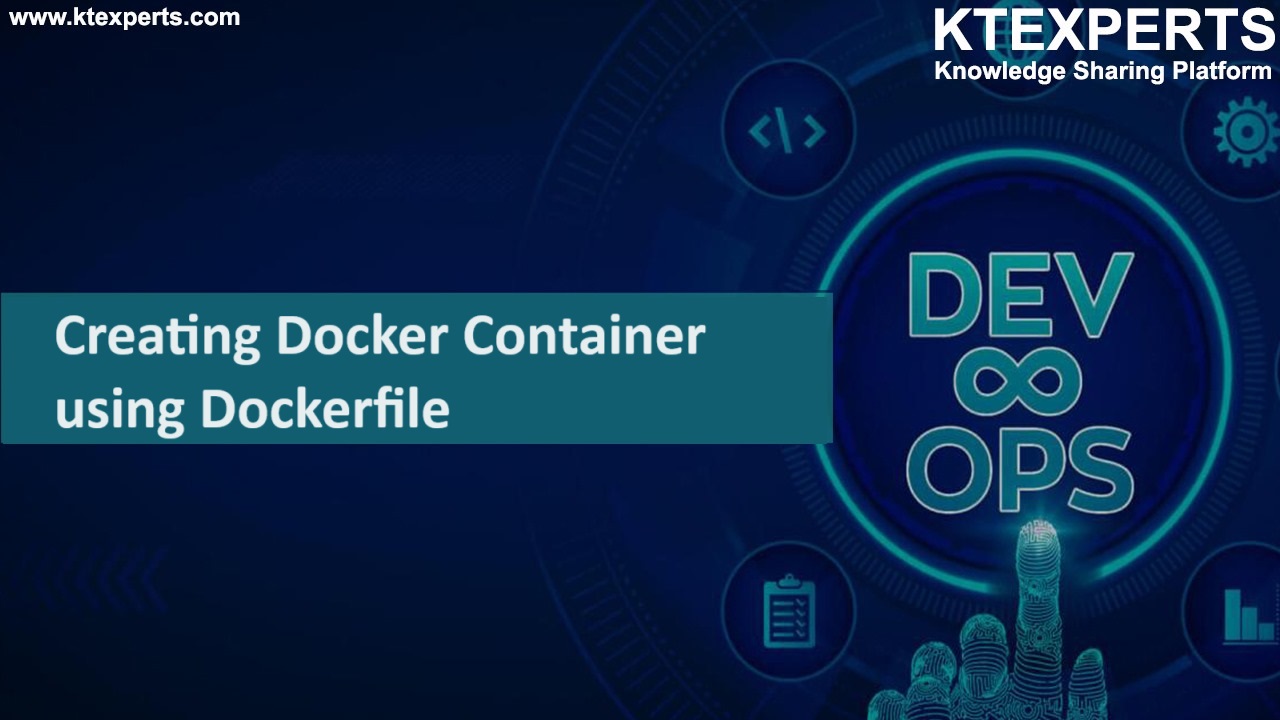GIT INTERVIEW QUESTIONS PART 3
Dear Readers,
In this article, we will discuss GIT INTERVIEW QUESTIONS PART 3
1. What is Git fork and difference between fork, branch and clone?
A fork is a remote, server-side copy of a repository, distinct from the original. A fork isn’t a Git concept really, it’s more a political/social idea.
A clone is not a fork; a clone is a local copy of some remote repository. When you clone, you are actually copying the entire source repository, including all the history and branches.
A branch is a mechanism to handle the changes within a single repository in order to eventually merge them with the rest of code. A branch is something that is within a repository. Conceptually, it represents a thread of development.
2. What’s the difference between a pull request and a branch?
A branch is just a separate version of the code.
A pull request is when someone take the repository, makes their own branch, does some changes, then tries to merge that branch in (put their changes in the other person’s code repository).
3. What is git cherry-pick”?
The command git cherry-pick is typically used to introduce particular commits from one branch within a repository onto a different branch. A common use is to forward- or back-port commits from a maintenance branch to a development branch.
This is in contrast with other ways such as merge and rebase which normally apply many commits onto another branch.
git cherry-pick <commit-hash>
4. Explain the advantages of Forking Workflow?
The Forking Workflow is fundamentally different than other popular Git workflows. Instead of using a single server-side repository to act as the “central” codebase, it gives every developer their own server-side repository. The Forking Workflow is most often seen in public open source projects.
The main advantage of the Forking Workflow is that contributions can be integrated without the need for everybody to push to a single central repository that leads to a clean project history. Developers push to their own server-side repositories, and only the project maintainer can push to the official repository.
When developers are ready to publish a local commit, they push the commit to their own public repository—not the official one. Then, they file a pull request with the main repository, which lets the project maintainer know that an update is ready to be integrated.
5. Could you explain the Gitflow workflow?`
Gitflow workflow employs two parallel long-running branches to record the history of the project, master and develop:
Master – is always ready to be released on LIVE, with everything fully tested and approved (production-ready).
Hotfix – Maintenance or “hotfix” branches are used to quickly patch production releases. Hotfix branches are a lot like release branches and feature branches except they’re based on master instead of develop.
Develop – is the branch to which all feature branches are merged and where all tests are performed. Only when everything’s been thoroughly checked and fixed it can be merged to the master.
Feature – Each new feature should reside in its own branch, which can be pushed to the develop branch as their parent one.
6. How to remove a file from git without removing it from your file system?
If you are not careful during a git add, you may end up adding files that you didn’t want to commit. However, git rm will remove it from both your staging area (index), as well as your file system (working tree), which may not be what you want.
Instead use git reset:
git reset filename # or
echo filename >> .gitingore # add it to .gitignore to avoid re-adding it
This means that git reset <paths> is the opposite of git add <paths>.
7. What are the main benefits of GIT?
There are following primary advantages of GIT:
Distributed System: GIT is a Distributed Version Control System (DVCS). So you can keep your private work in adaptation control yet totally escaped others. You can work disconnected too.
Flexible Workflow: GIT enables you to make your own work process. You can utilize the procedure that is appropriate for your venture. You can go for brought together or ace slave or some other work process.
Fast: GIT is quick when contrasted with other form control frameworks.
Data Integrity: Since GIT utilizes SHA1, information isn’t less demanding to degenerate.
Free: It is free for individual utilize. Such huge numbers of beginners utilize it for their underlying activities. It likewise works exceptionally well with substantial size task.
Collaboration: GIT is anything but difficult to use for ventures in which joint effort is required. Numerous prevalent open source programming over the globe utilize GIT.
8. How do you find a list of files that has changed in a particular commit?
For this answer instead of just telling the command, explain what exactly this command will do so you can say that, To get a list files that has changed in a particular commit use command
git diff-tree -r {hash}
Given the commit hash, this will list all the files that were changed or added in that commit. The -r flag makes the command list individual files, rather than collapsing them into root directory names only.
You can also include the below mention point although it is totally optional but will help in impressing the interviewer.
The output will also include some extra information, which can be easily suppressed by including two flags:
git diff-tree –no-commit-id –name-only -r {hash}
Here –no-commit-id will suppress the commit hashes from appearing in the output, and –name-only will only print the file names, instead of their paths.
9. How do you configure a Git repository to run code sanity checking tools right before making commits, and preventing them if the test fails?
I will suggest you to first give a small introduction to sanity checking, A sanity or smoke test determines whether it is possible and reasonable to continue testing.
Now explain how to achieve this, this can be done with a simple script related to the pre-commit hook of the repository. The pre-commit hook is triggered right before a commit is made, even before you are required to enter a commit message. In this script one can run other tools, such as linters and perform sanity checks on the changes being committed into the repository.
Finally give an example, you can refer the below script:
|
1 2 3 4 5 6 7 8 9 10 11 |
#!/bin/sh files=$(git diff –cached –name-only –diff-filter=ACM | grep ‘.go$’) if [ -z files ]; then exit 0 fi unfmtd=$(gofmt -l $files) if [ -z unfmtd ]; then exit 0 fi echo “Some .go files are not fmt’d” exit 1 |
This script checks to see if any .go file that is about to be committed needs to be passed through the standard Go source code formatting tool gofmt. By exiting with a non-zero status, the script effectively prevents the commit from being applied to the repository.
10. What is Git bisect? How can you use it to determine the source of a (regression) bug?
I will suggest you to first give a small definition of Git bisect, Git bisect is used to find the commit that introduced a bug by using binary search. Command for Git bisect is
git bisect <subcommand> <options>
Now since you have mentioned the command above, explain what this command will do, This command uses a binary search algorithm to find which commit in your project’s history introduced a bug. You use it by first telling it a “bad” commit that is known to contain the bug, and a “good” commit that is known to be before the bug was introduced. Then Git bisect picks a commit between those two endpoints and asks you whether the selected commit is “good” or “bad”. It continues narrowing down the range until it finds the exact commit that introduced the change.
11. What is the command you can use to write a commit message?
The command that is used to write a commit message is “git commit –a”. The –a on the command line instructs git to commit the new content of all tracked files that have been modified. You can use “git add<file>” before git commit –a if new files need to be committed for the first time.
12. Why GIT better than Subversion?
GIT is an open source version control system.
It will allow you to run ‘versions’ of a project, which show the changes that were made to the code overtime also it allows you keep the backtrack if necessary and undo those changes. Multiple developers can checkout, and upload changes and each change can then be attributed to a specific developer.
13. What is the function of ‘git reset’?
The function of ‘Git Reset’ is to reset your index as well as the working directory to the state of your last commit.
14. What is the difference between git remote and git clone?
git remote add just creates an entry in your git config that specifies a name for a particular URL. While, ‘git clone’ creates a new git repository by copying and existing one located at the URI.
15. What is Subgit? Why to use Subgit?
Subgit is a tool for a smooth, stress-free SVN to Git migration.
Subgit is a solution for a company wide migration from SVN to Git that is:
a) It is much better than git-svn
b) No requirement to change the infrastructure that is already placed
c) Allows to use all git and all sub-version features
d) Provides genuine stress –free migration experience.
16. How can you fix a broken commit?
To fix any broken commit, you will use the command “git commit—amend”. By running this command, you can fix the broken commit message in the editor.
17. How do we know in Git if a branch has already been merged into master?
git branch –merged
The above command lists the branches that have been merged into the current branch.
git branch –no-merged
this command lists the branches that have not been merged.
18. Describe the branching strategies you have used?
Generally, they ask this question to understand your branching knowledge
Feature branching
This model keeps all the changes for a feature inside of a branch. When the feature branch is fully tested and validated by automated tests, the branch is then merged into master.
Task branching
In this task branching model each task is implemented on its own branch with the task key included in the branch name. It is quite easy to see which code implements which task, just look for the task key in the branch name.
Release branching
Once the develop branch has acquired enough features for a release, then we can clone that branch to form a Release branch. Creating this release branch starts the next release cycle, so no new features can be added after this point, only bug fixes, documentation generation, and other release-oriented tasks should go in this branch. Once it’s ready to ship, the release gets merged into master and then tagged with a version number. In addition, it should be merged back into develop branch, which may have progressed since the release was initiated earlier.
19. What is best resolve in conflit in merge git?
Sometimes you get merge conflicts when merging or pulling from a branch. Git will then tell you something like CONFLICT (content): Merge conflict in Fakefile. It also tells you to fix the conflicts and then to commit the
|
1 |
git config --global merge.conflictstyle diff3 |
20. What are the different ways you can refer to a commit?
In Git each commit is given a unique hash. These hashes can be used to identify the corresponding commits in various scenarios (such as while trying to checkout a particular state of the code using the git checkout {hash} command).
Additionally, Git also maintains a number of aliases to certain commits, known as refs. Also, every tag that you create in the repository effectively becomes a ref (and that is exactly why you can use tags instead of commit hashes in various git commands). Git also maintains a number of special aliases that change based on the state of the repository, such as HEAD, FETCH_HEAD, MERGE_HEAD, etc.
Git also allows commits to be referred as relative to one another. For example, HEAD~1 refers to the commit parent to HEAD, HEAD~2 refers to the grandparent of HEAD, and so on. In case of merge commits, where the commit has two parents, ^ can be used to select one of the two parents, e.g. HEAD^2 can be used to follow the second parent.
And finally, refspecs. These are used to map local and remote branches together. However, these can be used to refer to commits that reside on remote branches allowing one to control and manipulate them from a local Git environment.
21. How do you setup a script to run every time a repository receives new commits through push?
To configure a script to run every time a repository receives new commits through push, one needs to define either a pre-receive, update, or a post-receive hook depending on when exactly the script needs to be triggered.
Pre-receive hook in the destination repository is invoked when commits are pushed to it. Any script bound to this hook will be executed before any references are updated. This is a useful hook to run scripts that help enforce development policies.
Update hook works in a similar manner to pre-receive hook, and is also triggered before any updates are actually made. However, the update hook is called once for every commit that has been pushed to the destination repository.
Finally, post-receive hook in the repository is invoked after the updates have been accepted into the destination repository. This is an ideal place to configure simple deployment scripts, invoke some continuous integration systems, dispatch notification emails to repository maintainers, etc.
Hooks are local to every Git repository and are not versioned. Scripts can either be created within the hooks directory inside the “.git” directory, or they can be created elsewhere and links to those scripts can be placed within the directory.
22. What is GIT?
GIT is a distributed version control system and source code management (SCM) system with an emphasis to handle small and large projects with speed and efficiency.
Git is currently the most popular implementation of a distributed version control system.
Git is commonly used for both open source and commercial software development, with significant benefits for individuals, teams and businesses.
Git originates from the Linux kernel development and was founded in 2005 by Linus Torvalds.
Nowadays it is used by many popular open source projects, e.g., the Android or the Eclipse developer teams, as well as many commercial organizations.
The core of Git was originally written in the programming language C.
Git has also been re-implemented in other languages, e.g., Java, Ruby and Python.
Git is a free software distributed under the terms of the GNU General Public License version 2.
According to the latest Stack Overflow developer survey, more than 70 percent of developers use Git.
23. What is a repository in GIT?
A Git repository contains the history of a collection of files starting from a certain directory.
The process of copying an existing Git repository via the Git tooling is called cloning. After cloning a repository the user has the complete repository with its history on his local machine.
24. What are the stages in GIT?
Work Space
It is a place where you work like create files, write code etc.
Where you can see files physically and do modifications.
Staging Area
The file has been added to git’s version control but changes have not been committed.
Buffer area
The file has been added to git’s version control, it will take snapshot (Incremental) immediately.
Repository (Local)
Store changes Locally.
Repository (Central)
Store changes Centrally
25. How git instaweb is used?
Git Instaweb automatically directs a web browser and runs webserver with an interface into your local repository.
26. Explain what is commit message?
Commit message is a feature of git which appears when you commit a change. Git provides you a text editor where you can enter the modifications made in commits.
Thank you for giving your valuable time to read the above information. Please click here to subscribe for further updates
KTEXPERTS is always active on below social media platforms.
Facebook : https://www.facebook.com/ktexperts/
LinkedIn : https://www.linkedin.com/company/ktexperts/
Twitter : https://twitter.com/ktexpertsadmin
YouTube : https://www.youtube.com/c/ktexperts
Instagram : https://www.instagram.com/knowledgesharingplatform




